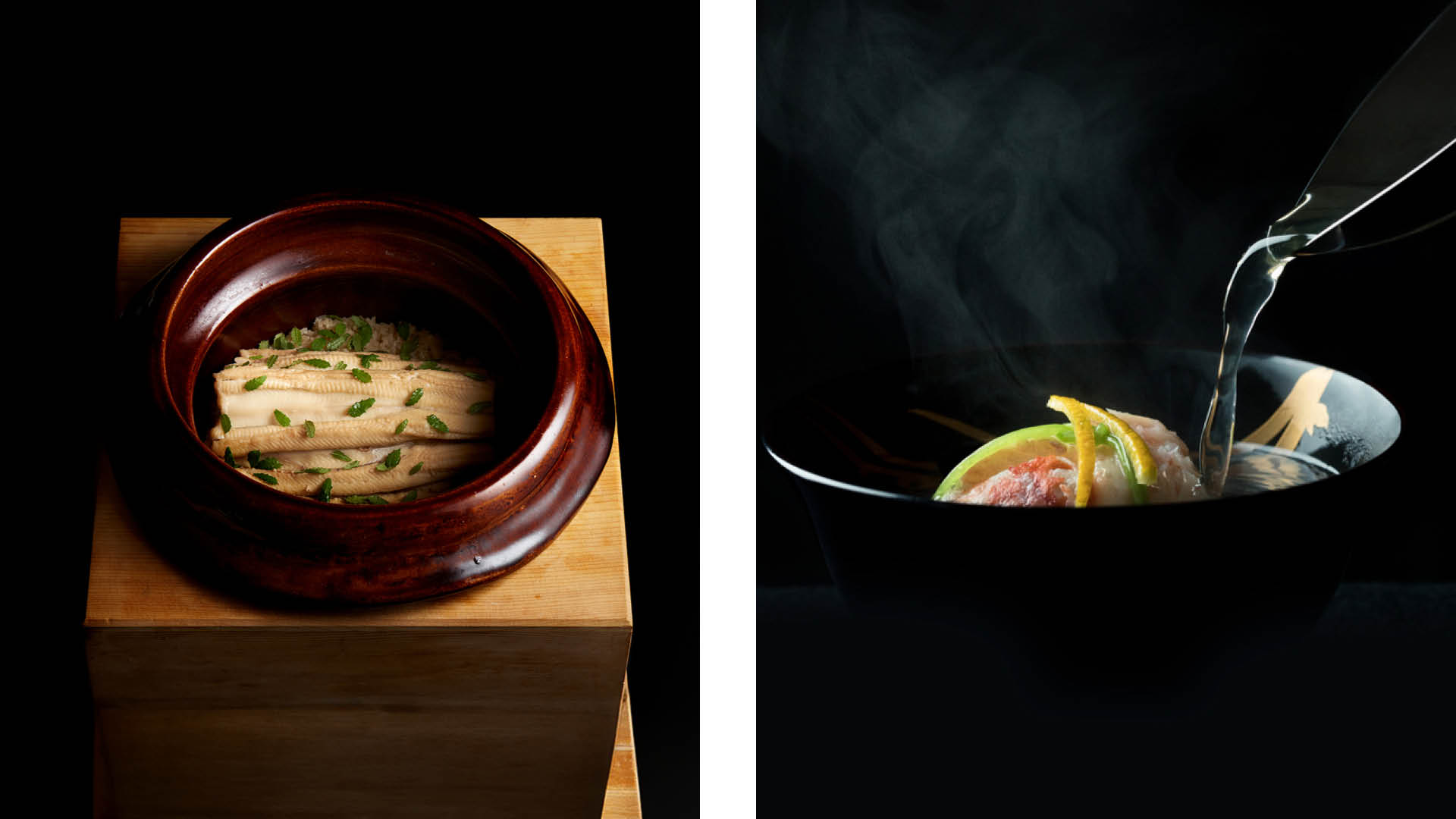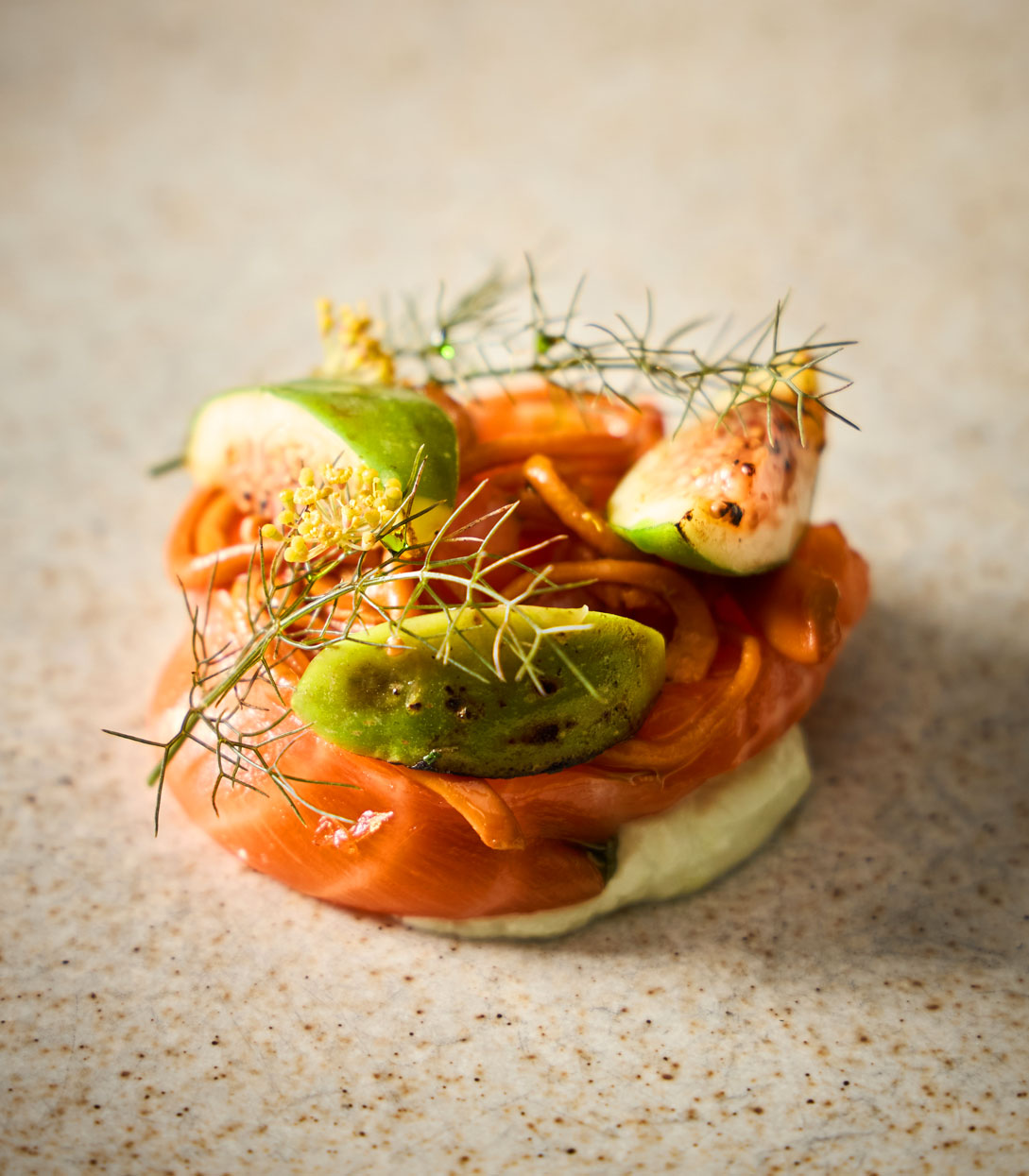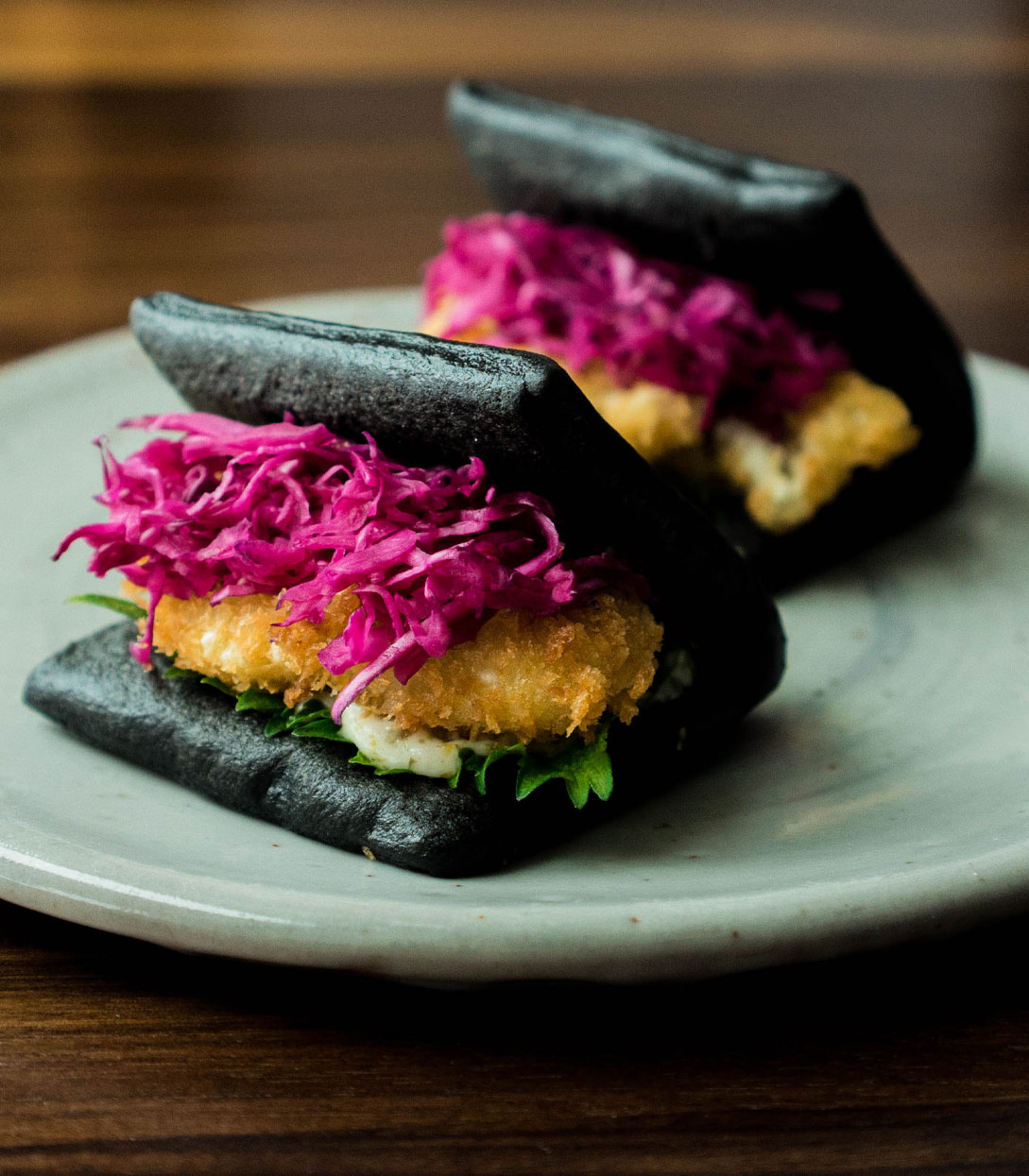Over the last decade, the United States has experienced a sushi boom. With New York City as its home base, one will now find some of the world’s most high-end counter-style omakase—or chef’s choice—dining outside of Japan. And with so many menu-less sushi counters, denizens both in and out of the Big Apple have become quite comfortable with this common Japanese dining term. But because of the prevalence, in particular, of sushi counters, somewhere along the way the term “omakase” has become synonymous with sushi. But as it turns out, this label can be affixed to nearly any genre of cuisine.
"'Omakase' translates to 'let the chef choose,'” states Hiroki Odo of New York’s Two MICHELIN Star, covert kaiseki counter, odo. He continues on to say that the term also encompasses a sense of seasonality—that the chef will choose from the best available ingredients on a given day.
Yuu Shimano of Brooklyn’s elegant French-Japanese tasting menu and One MICHELIN Star Restaurant Yuu, shares more insight. He adds that the word doesn’t only reference food, but a diner’s experience as a whole, including omotenashi, the Japanese word for hospitality in which a host goes above and beyond to create a memorable guest experience, and treats the guest like a close friend.
In the spirit of trust, we’ve rounded up nine of America’s top omakase experiences that sidestep sushi. From humble yakitori (grilled chicken) and tempura, to haute kaiseki cookery and wagyu, get the full details below.
Hayato, Los Angeles
With Two MICHELIN stars, Hayato is one of Los Angeles’ most venerated Japanese omakase experiences in which chef Brandon Hayato presides over a seven-seat counter wed to elegant kaiseki cookery—offering just one seating per eve. All 13 of the minimalist, ingredient-driven courses are prepped in front of guests and there’s a keen eye to Japanese seafood. Spanning around four hours, guests embark on a chef’s choice dinner that celebrates the season through the five fundamental Japanese cooking techniques—raw, grilled, fried, steamed, and simmered. On the current winter menu one will find dishes like chestnut tempura, binchotan-grilled snow crab, and California spiny lobster with its own roe in lobster dashi.

odo, New York
Tucked behind a hidden door at the rear of cozy Flatiron cocktail bar Hall sits Two MICHELIN Star odo, the six-year-old, rustic-minimalist 13-seat kaiseki counter from chef Hiroki Odo. Here, Odo embraces the customs of traditional kaiseki cookery; the meal is hinged on peak-season ingredients sourced both locally and from Japan, and presented via an eight-course menu that highlights unique cooking methods and genres of ingredients. While the omakase changes often, during the winter chef focuses on seafood (Japanese seafood is at its peak during cooler months when fish are fattiest and richer tasting) guests might try a wagyu beef shabu-shabu as the boiled course, while a ramen made with bluefin tuna represents the rice/noodle finale to sign out the savory portion of a meal.

Restaurant Yuu, New York
One of New York’s most exciting newer additions is Restaurant Yuu, the 16-course French-Japanese tasting menu from former Guy Savoy chef Yuu Shimano that earned a MICHELIN Star shortly after opening last spring. This fine dining Greenpoint experience centers around an L-shaped counter that looks into a totally open kitchen. Guests watch the chef brigade bake fresh Comté cheese gougères—which are passed straight from the oven to guests—and arrange Shimano’s signature duck en croûte, a honey-toned baked masterpiece fortified with four-week, dry-aged Hudson Valley duck leg and foie gras. The seasonal and often seafood-heavy menu concludes as guests are whisked to adjacent parlor tables to finish the meal with pistachio sablé mignardise and green tea.

Secchu Yokota, New York
There’s zero kitchen staff at the East Village’s husband-and-wife-run, tempura-focused Secchu Yokota, where chef Atsushi Yokota helms the six-seat counter. Secchu Yokota represents one of the country’s very few chef’s choice tempura restaurants, served via a seasonal 12-course omakase that takes a more contemporary approach. A chilled parsnip and tofu soup with dashi geleé could kick off a meal, which eventually leads into a tempura series that could include black tiger shrimp from Kyushu, and Hokkaido scallop tempura—the house signature.

Shibumi, Los Angeles
Eight-year-old, One MICHELIN Star Shibumi in Downtown Los Angeles—the kappo-style restaurant from chef David Schlosser that pays tribute to ancient Japanese techniques from 1600-1800s—is anchored by a 400-year-old cypress wood counter that’s lined with 16 seats. Guests embark on a hyper-seasonal eight-course tasting menu that completely changes every three months. Dishes embrace kaiseki traditions and feature cooking techniques like steaming, grilling, and frying; currently one will find a steamed egg custard with house-made kara sumi "bottarga" and cordycep mushrooms, and a whole yuzu, candied, and filled with sweet white bean paste.

Torien, New York
Four years ago, Japan’s most acclaimed chicken master––Yoshiteru Ikegawa of Tokyo’s introduction-only yakitori counter Torishiki—debuted his first international restaurant in partnership with Showa Hospitality: sleek, One MICHELIN Star Torien. Anchored by a 16-seat counter in New York’s Noho neighborhood, here chicken and seasonal vegetables are fired over ultra-hot binchotan charcoal (the same Kishū-sourced fuel that chef cooked with in Japan) and prepped in front of guests. The action-packed 13-course chef’s choice tasting menu changes often and includes signature skewers like kashiwa (chicken thigh) and teba (chicken wing). Here, skewers are lacquered in Ikegawa’s own 50-year-old tare sauce, and it’s the proteins' close proximity to the fiery coals that give his chicken its signature char.

Tsukimi, New York
Chef Takanori Akiyama of the East Village’s nearly four-year-old, One MICHELIN Star Tsukimi sums up his modern kaiseki menu via the Japanese saying “ohn-ko-chi-shin,” which represents the idea of attaining wisdom from tradition and history to create something new and better. This quaint, beautifully designed jewel box of a 12-seat restaurant—with two short parallel brass counters facing each other—honors kaiseki principles via an 11-course menu. Current highlights for the winter season include a steamed egg custard with Dungeness crab and Burgundy truffle, and grilled goldeneye snapper with daikon and chrysanthemum greens—a winter staple in Japanese homes during this season.

Tempura Endo, Los Angeles
While Tempura Endo—Los Angeles’ only tempura omakase restaurant—does offer tables, the place to sit is at one of the restaurant’s eight counter spots where chef Satoshi Masuda elevates fried food to a new level. A wafer-thin shell enrobes singular seasonal ingredients from small silver wakasagi to saury that are quickly fried in cotton seed oil. The sign of a true tempura shokunin (craftsman) is for a chef to serve a bite atop rice paper yet not leave a drop of oil, and that’s precisely the case here. Spanning roughly 15 courses, this is one of the city’s most special Japanese restaurants.

Shabushabu Mayumon, New York
Cozy and intimate with only eight counter seats, this four-year-old Lower East Side wagyu shabu shabu spot is a total hidden gem. In fact, Shabushabu Mayumon is New York City’s only respite for wagyu served in the shabu shabu dip style. The 20-course chef’s tasting menu changes around every four months, and centers around varied preparations of the iconic buttery beef. Behind the counter, the restaurant team carefully times how long paper-thin sleeves of Japanese and Japanese-American wagyu are dunked then swished in a kelp dashi broth, before they are dipped into sauces from ponzu to a sesame-soy. One will also find signature dishes like house-made yuba (tofu skin) made a la minute wrapped around sea urchin, and seasonal specials like Hokkaido scallop with an Iwanori seaweed sauce and yuzu kosho.

Hero image: Restaurant Yuu




















